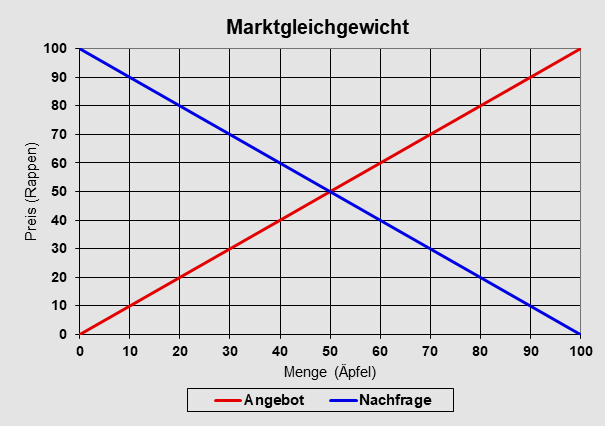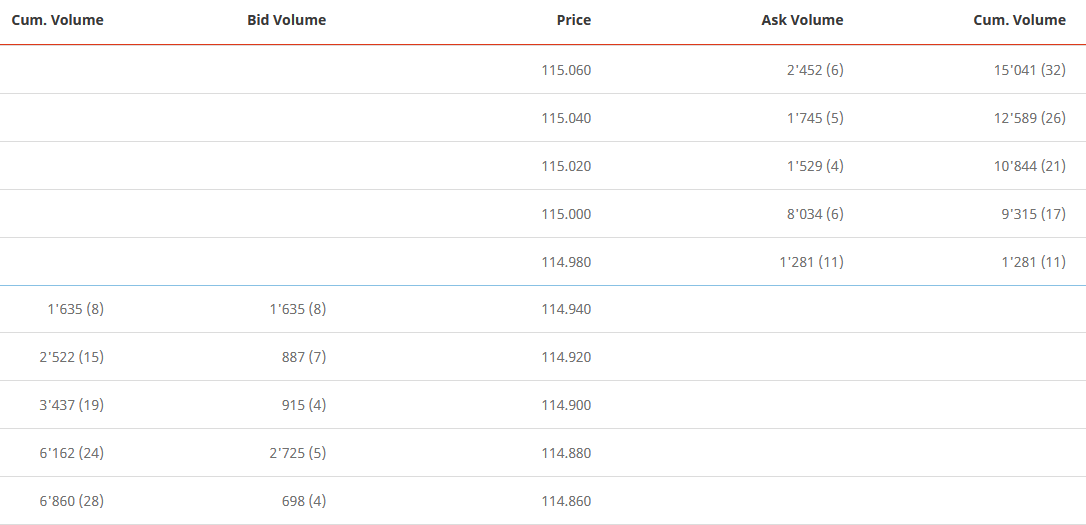What does the term demand mean?
Demand is the willingness of a consumer or buyer to pay a certain price for a certain good or service. Assuming that all factors remain constant, a price reduction leads to an increase in demand. Demand can mean either the market demand for a specific good or service or the total demand for all goods in an economy. Aggregate demand represents the demand for goods and services aggregated across an entire economy. If demand is set in relation tosupply, the price for a particular good or service and the quantity of this good or service purchased at this price can be determined.
Companies spend a lot of money to find out how high the demand for a product is. Based on demand, they can determine how much of their products a company can sell for a certain price. Demand and supply are highly interdependent. Buyers/consumers want to pay as little as possible for a product or service, while sellers want to sell the product at the highest possible price to maximize their profits. If the seller asks too much money for a product or service, fewer buyers/consumers will be willing to buy the product or service at that price and demand will fall. If a seller charges too little for a product or service, demand will exceed supply.
Supply and demand are usually determined by a wide variety of factors. Companies try to determine these and create curves to represent supply and demand. These curves are referred to as supply and demand curves. The curves are presented in diagrams. The vertical axis shows the price and the horizontal axis the quantity sold at the various prices. A demand curve therefore runs downwards, from left to right. Buyers/consumers will not buy the product or service at a very high price. The cheaper a product or service becomes, the more customers/consumers will buy the product or service. The supply curve is rising. When prices rise, sellers offer more of a product or service. The point where the supply and demand curves intersect is called the market equilibrium.
Example calculation of the equilibrium price
The offer
Assume that 100 apples are offered on the market at a price of one franc per apple. The supply of apples decreases by 10 apples each time the price of apples falls by 10 centimes, as some farmers are no longer prepared to offer their apples at this price. This can be represented by a function:
Quantity offered = 100 x price (in CHF)
The demand
Let’s assume that customers at the weekly market are not prepared to pay one franc for an apple. If the price is one franc, no apple would be sold. However, if the price falls, there are more and more customers who are willing to buy an apple. The sales volume of apples therefore increases as the price falls. Assuming there are 10 people willing to buy an apple for 90 centimes, 10 apples are sold on the market at a price of 90 centimes. Demand can also be represented by a function:
Demand quantity = 100 – (100 x price (in CHF))
Using these two functions, the equilibrium price can be calculated by equating the two functions. In this example, the equilibrium price is 50 centimes. This can also be seen in the figure.

Macroeconomic policy anddemand
It is the task of the Swiss National Bank (SNB) to ensure price stability while taking economic developments into account. In doing so, the SNB influences liquidity on the Swiss franc money market, which has an impact on interest rates. Very low interest rates lead to excessive demand for goods and services. This can lead to bottlenecks in the long term, which increases prices. Excessively high interest rates, on the other hand, lead to low overall demand, which lowers the prices of goods and services(inflation is dampened). The appreciation of the Swiss franc can also have a downward effect on prices.
Demand elasticity
The elasticity of demand indicates the relative change in the quantity demanded due to a relative change in price. Different goods can have different elasticities. Petrol, for example, is very inelastic, as drivers hardly adjust their fuel consumption in response to small price changes. Other goods are very elastic, for example luxury goods such as jewelry. Luxury goods are goods that consumers can more easily do without. It is very interesting for companies to know the elasticity of their products. As a rule, products that have an advantage over similar products and are therefore not easily interchangeable have a less elastic demand.
Equities also exhibit price elasticity of demand. Shares with a high price elasticity of demand are more volatile. This means that shares are more susceptible to changes in the economic cycle. A lower elasticity of demand leads to less volatility of the share. Stocks with low volatility are those in the utilities, telecommunications and consumer staples sectors.

Supply and demand as the basis for the share price
The prices of shares (share prices) are also calculated on the basis of buy and sell orders. Pricing is therefore based on the classic supply and demand mechanism.
The share prices are determined in the order book. In the order book, the quantity of sell offers (ask volume) for each share is compared with the quantity of buy offers (bid volume) at a specific price. The prices are called limits and are entered by investors as limit orders, for example. For shares to be traded, there must be a sell and buy offer with the same asking price. Only then are the shares actually traded. This is the case, for example, if there is a limit order with the same bid (buy) and ask (sell) price. Or a seller or buyer enters a “market order”, i.e. he is prepared to sell at the currently offered “bid” price or to buy at the offered “ask” price. The price that ultimately results from supply and demand is also the price that is shown in the price chart of a share. This represents the market equilibrium. The table shows the order book of the Nestlé share on September 10, 2021 (9:09 a.m., snapshot). The price is adjusted continuously. Above the equilibrium price (represented by the blue line in the chart), the sales offers are shown by quantity and price. Below the equilibrium price, the purchase offers are shown by quantity and price.

Order book of the Nestlé share on 10.09.2021 9:09 a.m., www.six-group.com
For example, if a buyer enters a market order for 2,000 Nestlé shares, he receives the first 1,281 shares for CHF 114.98 (ask price & ask volume at this price). He receives the remaining 719 Nestlé shares for CHF 115. The seller at the price of CHF 114.98 thus sells all his offered 1’281 Nestlé shares. The seller at the price of CHF 115 sells only 719 Nestlé shares of the total of 8,034 Nestlé shares offered in this trade.
If a seller enters a market order for 2,000 Nestlé shares in this order book, he sells the first 1,635 shares for CHF 114.94 (bid price & bid volume at this price). He sells the remaining 365 shares for CHF 114.92. On the buy side, the buyer who bid CHF 114.94 receives all of his desired 1,635 Nestlé shares. The buyer who bid only CHF 114.92 receives only 365 shares of the originally desired 887 shares in this trade.
This process is constantly repeated with each new order and the order book changes every minute, second or even fraction of a second for liquid securities.

